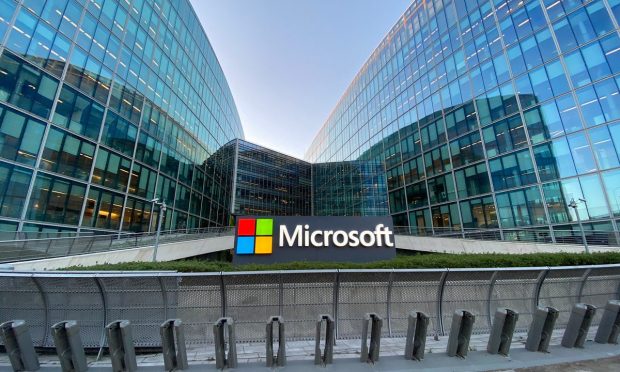From PC Renaissance to Great Workplace Reshuffle, Microsoft Hooks a Ride on Rising Digital GDP

With a market value north of $2 trillion and a stable of nearly two dozen products that generated close to $52 billion in revenue in the past 90 days, the modern version of Microsoft is a beast unlike any other in the tech industry.
While the past month and the first decade of the millennium saw the Redmond, Washington-based software giant struggling, the past five years have more than made up for that lull, especially the past two, thanks to an ongoing increase in what it collectively calls rising digital gross domestic product (GDP).
Although at the moment, the stock market may suggest it’s not a great time to own shares of MSFT — or any Big Tech firm for that matter — the company’s business results and societal trends would suggest otherwise.
“We are living through a generational shift in our economy and society,” Microsoft Chairman and CEO Satya Nadella told analysts and investors on the company’s second quarter earnings webcast Tuesday (Jan. 25). “As digital technology as a percentage of global GDP continues to increase, we are innovating and investing across diverse and growing [markets].”
One of those markets experiencing a generational shift is Microsoft’s Azure cloud computing business, which delivered 32% sales growth for the quarter, not only outpacing the company’s total topline advance of 21%, but accounting for 43% of total revenue for the three months ended Dec. 31.
Led by long-term cloud contracts, Microsoft’s bookings — the best measure of future business — were up 37% when the effect of currency changes were backed out, Chief Financial Officer Amy Hood said on the call.
It also reflects a macro-level commercial embrace of digital change that doesn’t just turn off in a quarter or a year.
Name Drop City
Billionaire Bill Gates may have built and run Microsoft for the first 25 years and helped Windows and Office become the most installed software ever, but the company he left in behind in 2000 barely resembles the all-digital, multi-product monstrosity that exists today.
From Xbox games and devices to internet search and ads, to the triple-digit growth of its Power business intelligence suite, and the surge it’s seeing at LinkedIn and resurgent demand for PCs, Microsoft — and its seemingly endless list of big-name customers — is living in a changed world.
“We are innovating and expanding our entire portfolio across consumer and commercial segments to help people and organizations thrive in this new era,” Nadella said, in between who’s who of passing references to deals done with Chipotle, The Home Depot, Daimler Trucks, Ahold, FedEx and United Airlines to name a few.
Read more: FedEx, Microsoft Unveil ‘Logistics-as-a-Service’ to Meet Better Shopping and Shipping Demand
The quarterly results might be about Microsoft, but the trend — that generational shift — is about something much, much bigger that’s only just begun.
“Every business will need to become a hyperconnected business, unifying data, process and teams across the organization,” Nadella said, before pivoting to other megatrends like artificial intelligence (AI), the metaverse and unforeseen changes to the labor market that started out as temporary but have now become permanent.
“We are experiencing a ‘Great Reshuffle’ across the labor market, as more people in more places than ever rethink how, where and why they work,” said the CEO, who has helmed the company since 2014 and worked there since 1992.
To that point, and in this “new economy,” Nadella pointed to LinkedIn’s “mission critical” role of connecting job seekers with employers that saw record engagement last quarter amidst confirmed hires that were up 110%.
Again, these results are reflective of a changed world that continues to surprise and digitize in unexpected ways, both on a commercial and personal level. In a shift reminiscent of the return of bell bottoms or changing hemlines in fashion, even old and seemingly outdated pockets of tech are getting a relook and rethink in terms of how they fit into the digitally dominant world of today.
To wit, the return of the personal computer.
“As new use cases are born every day, and existing ones see a resurgence, we’re experiencing a PC renaissance, with increases in time spent on PCs and PCs per household,” Nadella said.
So, while analysts and investors might be sweating the stock’s 15% slide from an all-time high in mid-November, Nadella and the modern Microsoft model are calm and focused on building what he calls the “digital fabric that will connect and empower everyone.”
